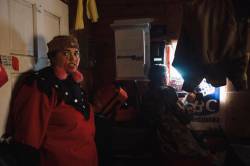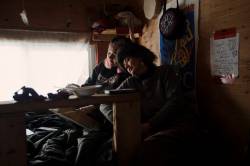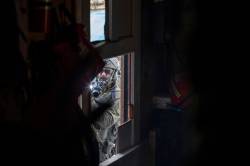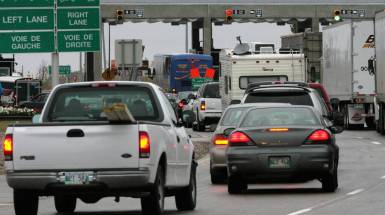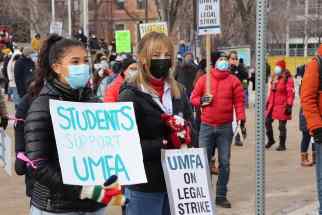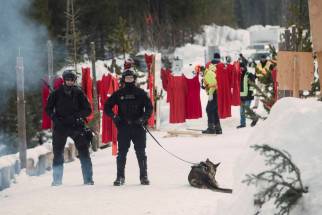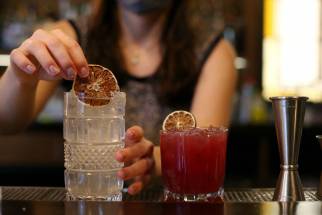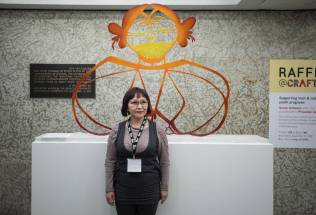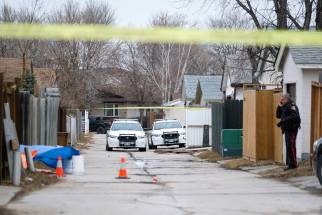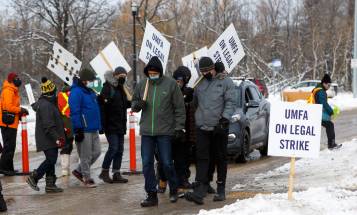Out of focus at Wet’suwet’en With so much at stake in B.C. pipeline conflict, why did press freedom claim the most attention?
Read this article for free:
or
Already have an account? Log in here »
To continue reading, please subscribe:
Monthly Digital Subscription
$19 $0 for the first 4 weeks*
- Enjoy unlimited reading on winnipegfreepress.com
- Read the E-Edition, our digital replica newspaper
- Access News Break, our award-winning app
- Play interactive puzzles
*No charge for 4 weeks then billed as $19 every four weeks (new subscribers and qualified returning subscribers only). Cancel anytime.
Read unlimited articles for free today:
or
Already have an account? Log in here »
Hey there, time traveller!
This article was published 02/12/2021 (1022 days ago), so information in it may no longer be current.
As an RCMP helicopter lowered into the camp, Amber Bracken raised her camera and began to take photos. An award-winning photojournalist, she kept taking photos as heavily armed police chopped through the door of the tiny wooden house where Indigenous activists were huddled, kept taking photos as they stared down the barrel of an RCMP rifle.
Fifteen people were arrested that day, Nov. 19, as RCMP raided the camp set up by Wet’suwet’en leaders to halt development of the Coastal GasLink pipeline, set to cross through the territory of the nation’s Gidimt’en clan. Among those arrested were the camp’s leader, Gidimt’en wing chief Sleydo’ Molly Wickham, Wet’suwet’en elders, legal observers and allies.
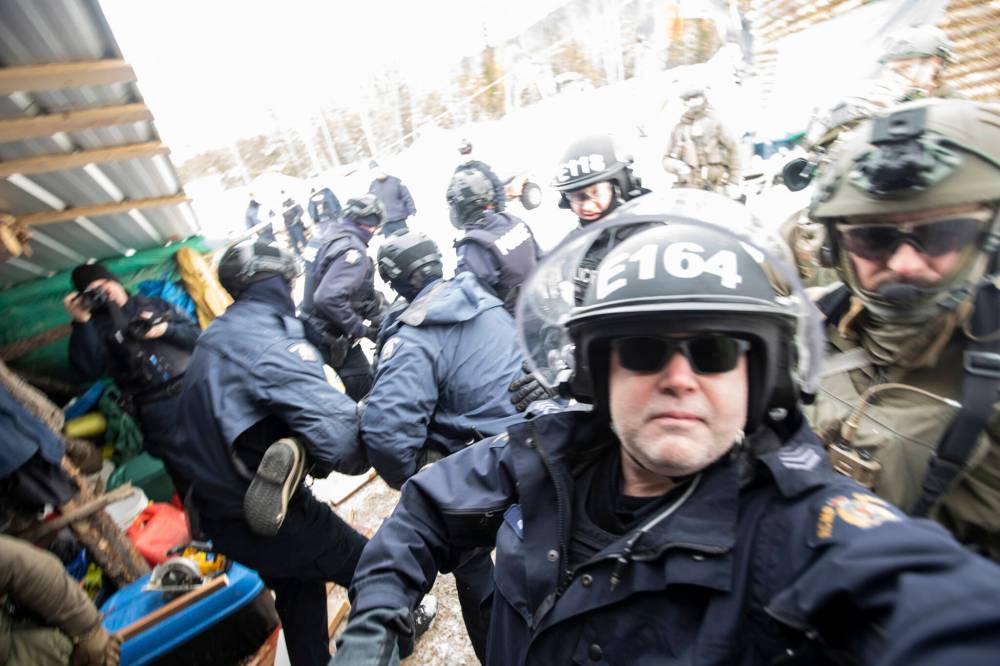
Yet as news broke of the events in British Columbia, national attention coalesced around the arrest of Bracken, who was on assignment for The Narwhal, and documentary filmmaker Michael Toledano. The two journalists’ arrests sparked a surge of condemnation across Canada and the world, as press freedom advocates rallied to demand their release.
Both were eventually released after a court hearing, with national media covering their cases.
Now, Bracken shares some of her images from over three years documenting Wet’suwet’en resistance with the Free Press, and she and Sleydo’ reflect on the unfolding narrative that made Bracken — but not the Indigenous people whose stand she was documenting — the focal point of the story.
Quotes have been edited for length and clarity.
● ● ●
During the five days she was held in custody, Bracken had little access to the national conversation sparked by her arrest, beyond hearing from a lawyer that the journalists had a lot of support, which, she says, “felt good to hear when you’re in cells.” But after her release on Nov. 23, she wrestled with how press freedom had taken the lion’s share of attention.
Amber Bracken
I think that we did lose the thread somewhere, in terms of why it matters that we did have press freedom there. This dispute is central to what we talk about in Canada, when we talk about reconciliation… I find it interesting that we get really excited about the journalistic conversation, and I haven’t seen as much conversation about the foundational story to begin with.
The day that The Toronto Star and many of the papers had the headline that I was being released, Molly Wickham, or Chief Sleydo’, was still in prison, along with several other supporters. And she was still there because they were trying to force her to sign conditions that said she was not allowed to go home to her territory.
So you have this bizarre civil charge trying to disenfranchise someone from their territory, and that was of no concern (in media coverage). That was not really part of the narrative. It’s a little bizarre that people are so happy I’m free, but we completely forgot that the actual participants in the story were not.
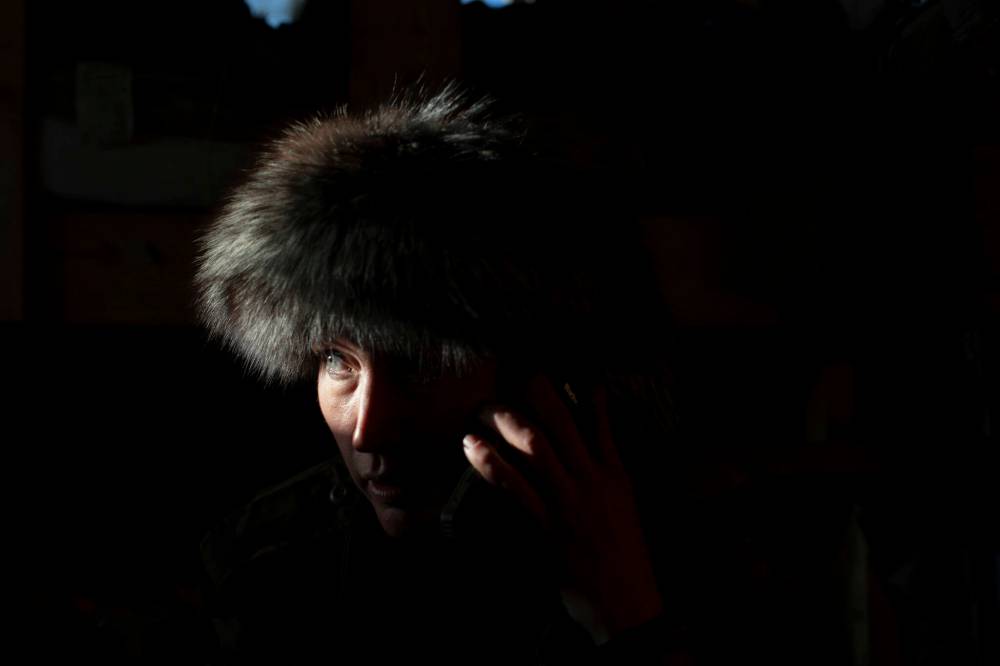
Chief Sleydo’ Molly Wickham
It’s important that people understand the extent of all of the mistakes that police made, and the fact they arrested legal observers and members of the press. But also, I think it’s really important that people understand the depth of violence they brought to our territories, especially against Indigenous women.
I feel like that was kind of lost on most mainstream media, that this was a very, very violent arrest. That they brought as much force, if not more, than they have every other year. The arrests at (the Gidimt’en checkpoint, up the road from the main camp) as well were really violent… One person got hit with a baton. People were punched and bleeding. All of those details are really important for the public to know about, and I don’t think they were given enough attention at all.
● ● ●
After Bracken’s seized gear was returned, photos that she took of the arrests, published first in The Narwhal, were seen by thousands. Yet those images, represent a tiny portion of the life she has documented in the Wet’suwet’en camps since 2018. The full range of images, Sleydo’ and Bracken say, is crucial to understanding the story.
Sleydo’
I think it’s important because oftentimes, we’re very dehumanized in the media. We’re often times not named as human beings. We’re just labeled “protesters,” which I find almost to be a derogatory term in this sense.
We are Wet’suwet’en people that belong to the land, that have been here for thousands of years. We’re not just a “protester” that decided to come stand on a line. We have so much more invested in this, in the relationship with our land, and the issue of title and sovereignty is so much more complex.
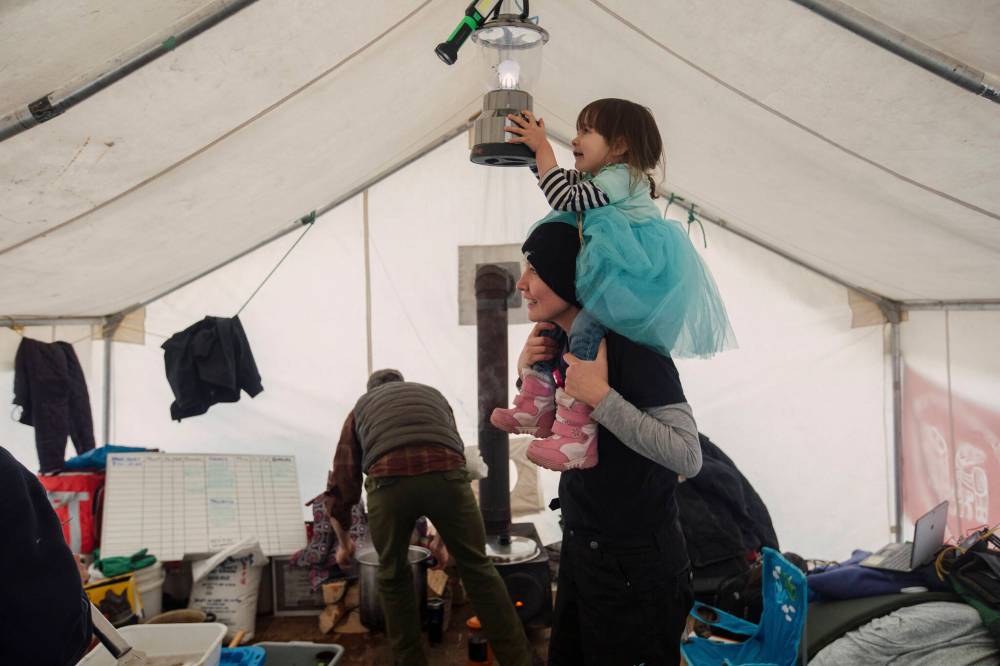
Bracken
We know that it gets people’s attention when there’s some kind of jackbooted conflict. It’s not surprising that the most sensational images of militarized police, of weapons being pointed at people, of people being taken away, that those kind of images have more reach. People get more excited about them.
But I have spent much more time just documenting what life in the camps is like. Molly Wickham spending time with her family, and being really adorable, like kids playing on the territory and those kinds of things. But they just don’t have the same cultural capital, because people are less interested in these peaceful or quiet moments than they are in the more dramatic, violent images.
Ultimately, in both cases, they’re iterations of Wet’suwet’en people asserting their position by occupying the land. The only difference between them is the level of violence.
● ● ●
This dichotomy — the popularity of images of force used against Indigenous declarations of sovereignty, and the relative public disinterest in peaceful photos of the same — raises a key question. How does it affect the national understanding about what is at stake when the majority of the public is only exposed to high-tension images?

Bracken
It’s a delicate question. Because I think it’s important for people to see and understand exactly what that police violence looks like. It’s impossible for me to fully explain what it’s like for green-suited militarized police to drop from helicopters with tactical weapons and surround you.
It’s important for people to understand what their governments are funding, and what this enforcement actually looks like. When I’m saying Indigenous people are being removed from their territory at the point of a gun, I mean it literally.
So it’s important for people to see those images, but I think in only focusing on the most heightened parts of the conflict, we do a disservice in the larger spirit of what people are there to do. It feeds into some of the police narratives about the people out there being dangerous, militarized, violent, because when you’re only seeing them in this conflict setting, it’s really a mischaracterization of what they’re broadly there to do.
● ● ●
The conflict over the Coastal GasLink pipeline is dense. It’s about the clash between Indigenous law and Canadian law, and between industry and environmental defenders. It’s about how police force is used against Indigenous people, about internal conflict within the Wet’suwet’en Nation and, now, about press freedom.
Above all, it is about who has the right to decide what happens to the land, and what is done to those who do not consent.

To build the 670-km pipeline, TC Energy obtained written consent from all 20 First Nations along the pipeline’s path. But the First Nations, which are governed by elected councils defined under the federal Indian Act, only have legal jurisdiction over the land within their reserve borders.
That leaves 22,000 sq. km. of land, never ceded to Canada by the Wet’suwet’en and subject to no treaty.
According to a landmark 1997 Supreme Court decision, Delgamuukw vs. British Columbia, aboriginal title for this land rests with hereditary chiefs, chosen by elders of the 13 houses that comprise the Wet’suwet’en’s five clans, following Wet’suwet’en law that existed long before the Canadian state. The Wet’suwet’en have never abandoned this form of governance.
The majority of these hereditary chiefs oppose pipeline development and hold that development cannot happen without their consent. They have sanctioned resistance efforts, including camps, checkpoints and blockades, and issued orders evicting pipeline workers from the territory.
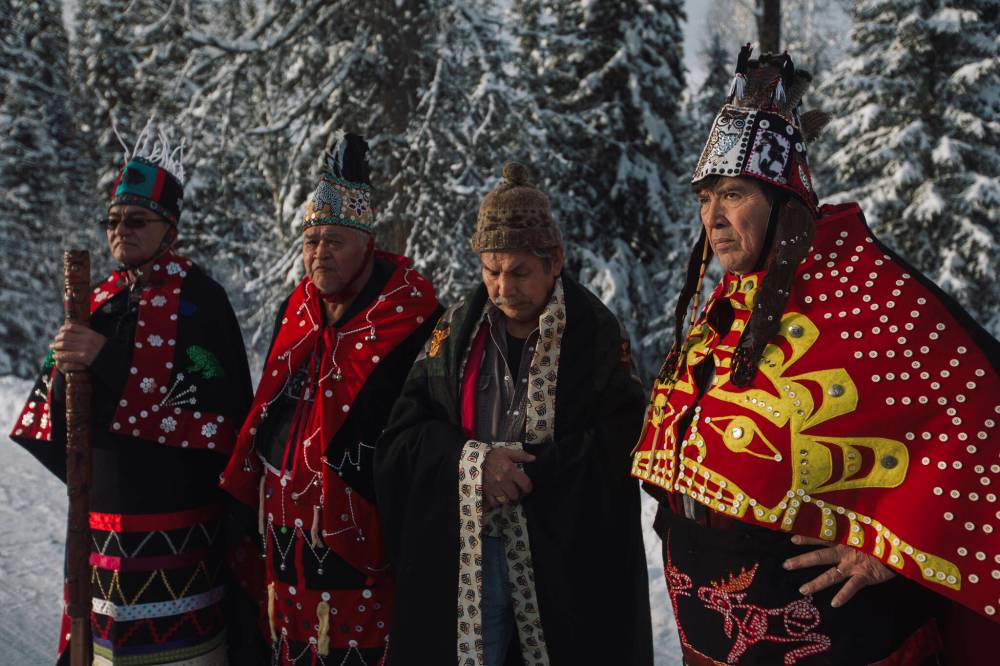
Since late 2018, courts have upheld injunctions allowing work on the pipeline to continue. The RCMP, in periodically arresting and forcibly removing Wet’suwet’en members and allies, are acting to enforce this injunction.
In this, Bracken says, images of the arrests are a necessary part of visualizing the relationship between Indigenous people and the Canadian state. After all, we see many highly curated images of this relationship: politicians wearing ceremonial headdresses at press conferences, that kind of thing. But these front-line clashes are part of that story too.
Bracken
If (the positive images) are the only representation that we get of the relationship between Indigenous people and the government, then effectively what we’re getting is some kind of public relations. Because there’s all kinds of Indigenous Nations across this country that will tell you that’s not their experience. Their experience is being overpoliced. Their experience is having injunctions used against them.
So it’s really about having a balanced representation. Sure, sometimes people work together and there is some positive relationship building. But then also there is this tendency towards violence against Indigenous people who don’t want to go along with the party line.
● ● ●

If the public takes anything away from Bracken’s images of the Gidimt’en camps — not just during the most recent arrests, but throughout the years they have been active — Bracken and Sleydo’ hope it will be a reflection about what the events mean, not just for the Wet’suwet’en, but the future of rights and relationships with all Indigenous nations.
Bracken
I hope that people will understand that there’s a well-supported claim on the land, that would necessitate a radically different relationship between the government and Wet’suwet’en people. And the government is well aware of this. It’s been in the courts since the 1970s. And rather than engaging with it sincerely, they have continued to permit and allow encroachments on that aboriginal rights and title, as it benefits them.

Sleydo’
I hope that they can reflect on the fact that if this can happen to us here, it can happen to anybody. And that they can identify themselves like, it could very well have been them, standing there as a legal observer.
It’s really important for people to know and understand that this is a very dangerous path that we’re on in terms of police violence. If they’re getting away with this in our community, that’s setting some really dangerous precedents that they’re going to continue to do this to people, not just here, but everywhere within this so-called B.C. and so-called Canada.
The more that happens, and the more Canadian society accepts that and isn’t outraged by that, the more common it will become.
melissa.martin@freepress.mb.ca

Melissa Martin
Reporter-at-large
Melissa Martin reports and opines for the Winnipeg Free Press.
Our newsroom depends on a growing audience of readers to power our journalism. If you are not a paid reader, please consider becoming a subscriber.
Our newsroom depends on its audience of readers to power our journalism. Thank you for your support.



